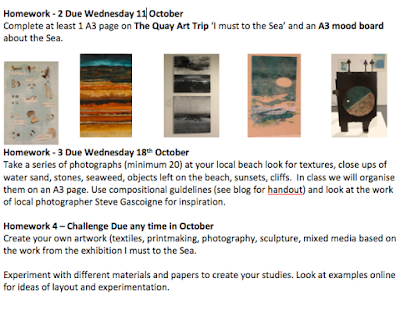1. Basic Information
The
name of the artist
What
country are they from? (This is
important as it puts the work into context)
The
name and date of the series that you are interested in.
The
name and date of any images you choose from the series to analyse.
Research
and explain what the artist’s intentions are.
What concept, message or meaning
did the artist want to communicate or explore?
2. Visual Qualities
What
do you like about the image?
What
is the image of?
What
is the main focus?
Can
you write about any formal elements?
Line, Colour,
Shape, Form, Texture, Pattern, Tone…
How
has the artist achieved the meaning/concept or message?
What
composition style have they used?
Leading lines, golden section, the rule of thirds…
How
have they used the lighting in the image?
If
they have used people s can you read any body language or facial expression?
3. Camera Settings (Photography)
What
shutter speed do you think they have use?
What
ISO do you think they have used?
Discuss
the aperture settings used?
Shallow/long
depth of field
Where
have they focused?
4. Relate to your own work
This
is VERY important so do not leave it out! By answering these questions you will
be explaining to the examiner just how you intend to use this investigation
work to inspire your own work.
How
will
you be influenced by this artist?
What
techniques,
concepts or visual effects are you most inspired by?
How will
you take this influence and use it in your work?




